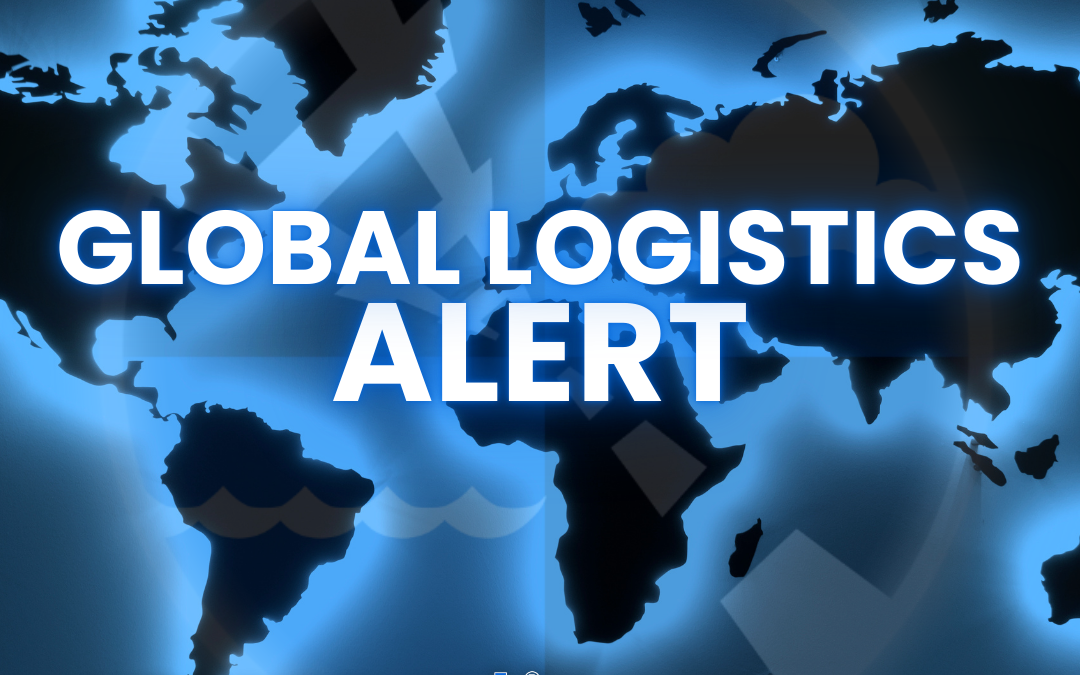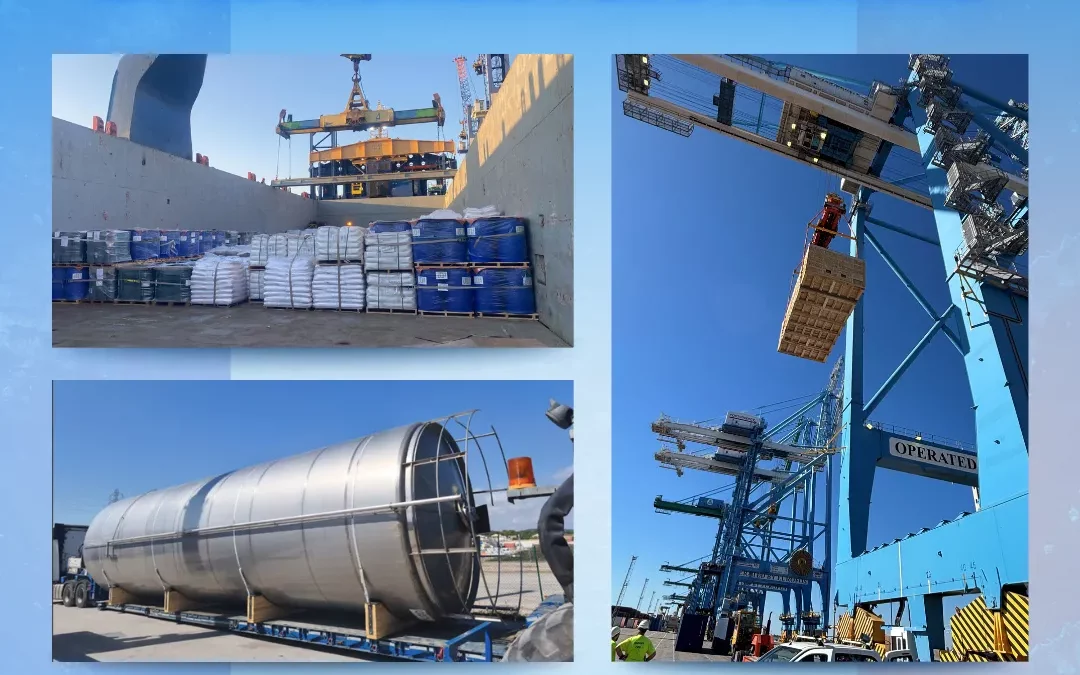
by Ryan Markiewicz | May 14, 2025 | News
 The Logistics Plus (LP) France team continues to support and manage projects across Europe, Asia, and Africa. Here are a few of the most recent projects handled by the LP France team:
The Logistics Plus (LP) France team continues to support and manage projects across Europe, Asia, and Africa. Here are a few of the most recent projects handled by the LP France team:
1) Vessel Charter from Turkey to West Africa
LP France successfully managed two consecutive vessel charters from Turkey to West Africa. The first shipment was 4,500 metric tons, utilizing four separate discharge ports. The second was executed shortly after the first and weighed in at 2,500 metric tons.
2) Towers from Spain to Belgium
The LP France team delivered seven towers from Spain to Belgium. The project required precise planning, staging, warehousing, and road transportation to ensure a safe and timely delivery to the client.
3) Crates from France to China
Logistics Plus France shipped 44-ton crates on a container vessel from France to China for an ongoing project.
Photos from these projects can be seen below.
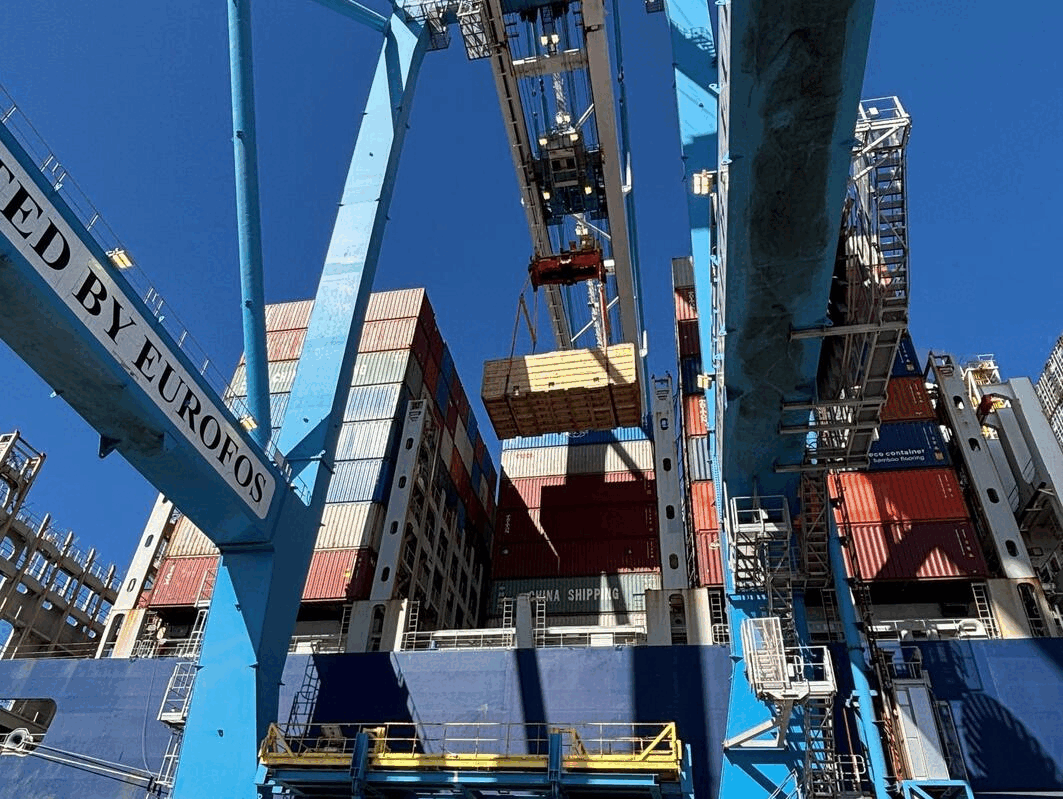

by Ryan Markiewicz | May 13, 2025 | News
 Logistics Plus Customs Brokerage Manager Gretchen Blough appeared on NPR’s May 12, 2025, edition of Marketplace, titled “U.S. and China Hit Pause on Tariff War.” In this episode, Gretchen discussed the temporary pause in the tariff war between the United States and China and what it means for consumers.
Logistics Plus Customs Brokerage Manager Gretchen Blough appeared on NPR’s May 12, 2025, edition of Marketplace, titled “U.S. and China Hit Pause on Tariff War.” In this episode, Gretchen discussed the temporary pause in the tariff war between the United States and China and what it means for consumers.
Listen to the full episode online at https://www.marketplace.org/episode/2025/04/18/us-and-china-hit-pause-on-tariff-war. Gretchen’s segment begins at the 10:34 mark and concludes at the 13:15 mark.
Marketplace® is a nonprofit news organization on a mission to raise the economic intelligence of the country. For more than 30 years, they have helped people become smarter about the economic forces that touch their daily lives through the unorthodox story, the casual conversation, and the unexpected angle on the news.
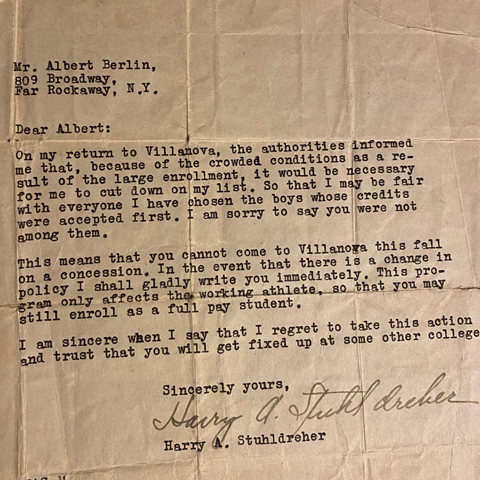
by Ryan Markiewicz | May 9, 2025 | Berlin's Wall
All,
It’s pretty interesting—and exciting—that the new Pope is the first American Pope after 275 predecessors. I also read this morning (though not yet confirmed) that his grandparents and great-grandparents were from the Dominican Republic and have French/African Creole roots in New Orleans, making him, in many ways, a reflection of the broader American story and of humankind. Pretty cool.
Even more amazing? He’s a graduate of Villanova University in Pennsylvania—where, as it happens, my former son-in-law teaches.
That Villanova connection brought to mind a story that says a lot about how far we’ve come.
Back in 1931, my Dad—Albert Berlin—was a standout athlete in New York City, recruited by several colleges to play football, including Villanova. Their athletic director at the time was Harry Stuhldreher, one of Notre Dame’s legendary “Four Horsemen.” My Dad had been offered a spot… until the school found out he was Jewish.
I have the original letter, which is still on my wall today. In it, Stuhldreher regretfully withdraws the offer, citing overcrowding and limited scholarships. But in person, he admitted the truth: Jews were not allowed at Villanova back then. The name “Berlin” had slipped through. Once discovered, the decision came down from above: no go.
To his credit, Stuhldreher was ashamed. He helped my Dad get into NYU and stayed in touch with him for years.
Decades later, when I was with Governor Ed Rendell (a Jewish New Yorker and proud Villanova grad) receiving the Pennsylvania Exporter of the Year Award, I showed him that very letter. We both marveled at how the world had changed.
And now, here we are. A new Pope, from America, from Villanova—hopefully another sign of how far we’ve come. From exclusion to inclusion. From shame to progress. From whispered apologies to global milestones.
The arc does bend—if we help it along.
Onward! -JB
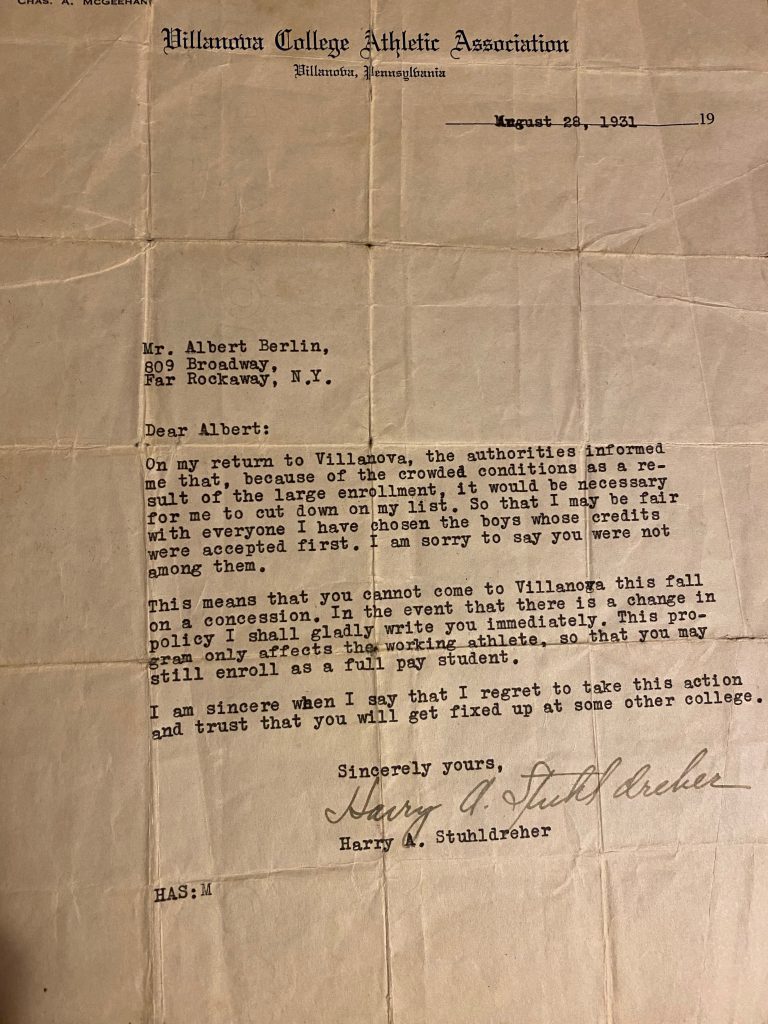

by Ryan Markiewicz | May 5, 2025 | Berlin's Wall
I just had breakfast with Brandon Beane at the stadium. Thanks to M&T Bank for the invite, and to our good friend Bill Hanes for the private introduction. I’ve met Beane before—thoughtful guy. Smart. Grounded. You can see why players want to be here.
He talked shop, of course—all the work it takes to build a winning team. (This’ll be Beane’s ninth season, and the Bills have won the AFC East five of his last six. Pretty damn good.)
He looks for guys whose arrows are pointing up—or at least sideways/not down. Bosa’s only 29. They picked up some great D-line talent in the draft. Said the priority this year was getting the defense younger and hungrier. New leadership. Tre’Davious White will help coach up Max Hairston, their first-round pick, and others. On offense, Khalil Shakir is a guy who can go slot or wide—slot first. Josh Palmer can go wide or slot—wide first. Different puzzle pieces. Salary cap always in play (BIG thanks to the Pegulas for putting their money where their team is).
And Josh Allen? Beane’s first draft pick as GM 8 years ago. (Nailed that one!) Still ascending, he believes. Arrow still up. And as good as he is at QB1, Beane said he’s an even better human being. Said he’s been around this league a long time and seen plenty of guys who turn on the “nice and humble” for the cameras—but act like a**holes when they’re off. “Ask anyone in the locker room or anyone working in this building,” he said. “They’ll all tell you: Josh is the real deal.”
Awesome.
But what stuck with me most wasn’t the roster or the draft board. It was the idea of players being there. Brandon talked about team building—not in the corporate “let’s-do-trust-falls” kind of way. Just being present. Showing up. Listening. Learning.
He said, “Sure, you can lift weights anywhere—but working out together and then hanging out afterward? That’s a whole different thing.” I agree. Same with any business. You want your guys to play for each other. That’s what builds success.
Afterwards we got to walk on the field—pretty cool. And it struck me, as it did others who I talked to: it’s bittersweet. I know it’s the second-oldest stadium in the NFL, but there have been incredible memories and moments here—for the team and the fans. And I know for me, for sure. Can’t wait for the new stadium in ’26, but still… sad to see the old place go.
As I drove home, I couldn’t help thinking about the long arc that brought me back to this field—memories of the old stadium, the drives down I-90 a thousand times from Buffalo, first to Jamestown, then to Erie. Starting way back in 1982 when I got the job in Jamestown, driving truck for Oneida Motor Freight. Headed down on Monday mornings, back on to Buffalo on Friday. Sleeping in my old Chevy Suburban at the Rt. 17 rest area four nights a week—just trying to make something happen. Trying to figure out what was going to be the path for our young family.
So yeah, maybe it’s corny—but sometimes, a stadium isn’t just a stadium. It’s a time machine. A mirror. A metaphor.
And who knows? Maybe—just maybe—this coming season–the last one in this well-worn, much-beloved stadium, will be the year the Bills finally get to lift the Lombardi Trophy.
How’s that for an ending?
Friggin’ poetry.
Onward!
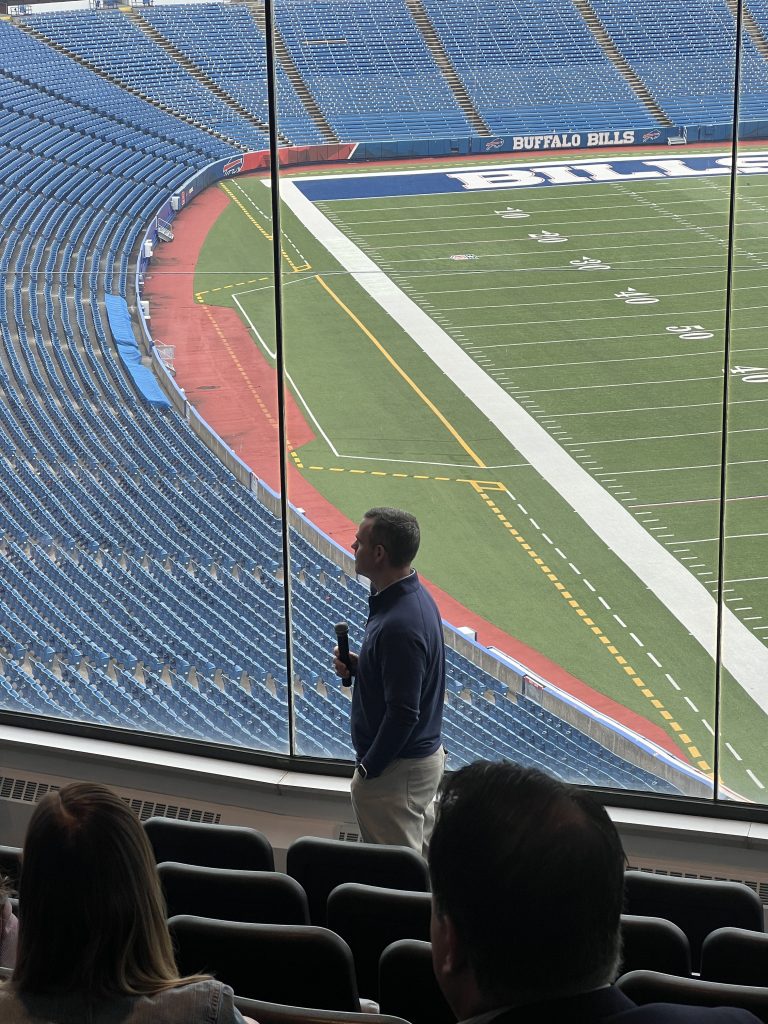
Brandon Beane addressing the group inside the stadium suite, with the field as his backdrop. Smart, grounded, and clearly in his element.
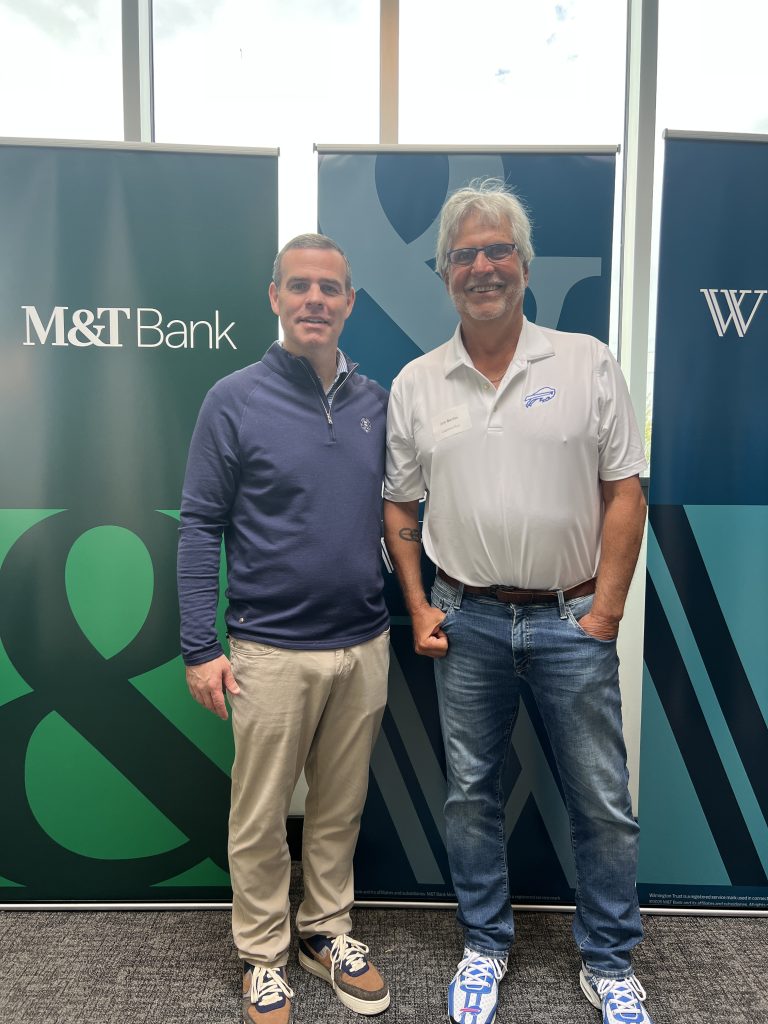
Me with Brandon Beane after breakfast. A good man, and a GM who’s built a culture players want to be part of.
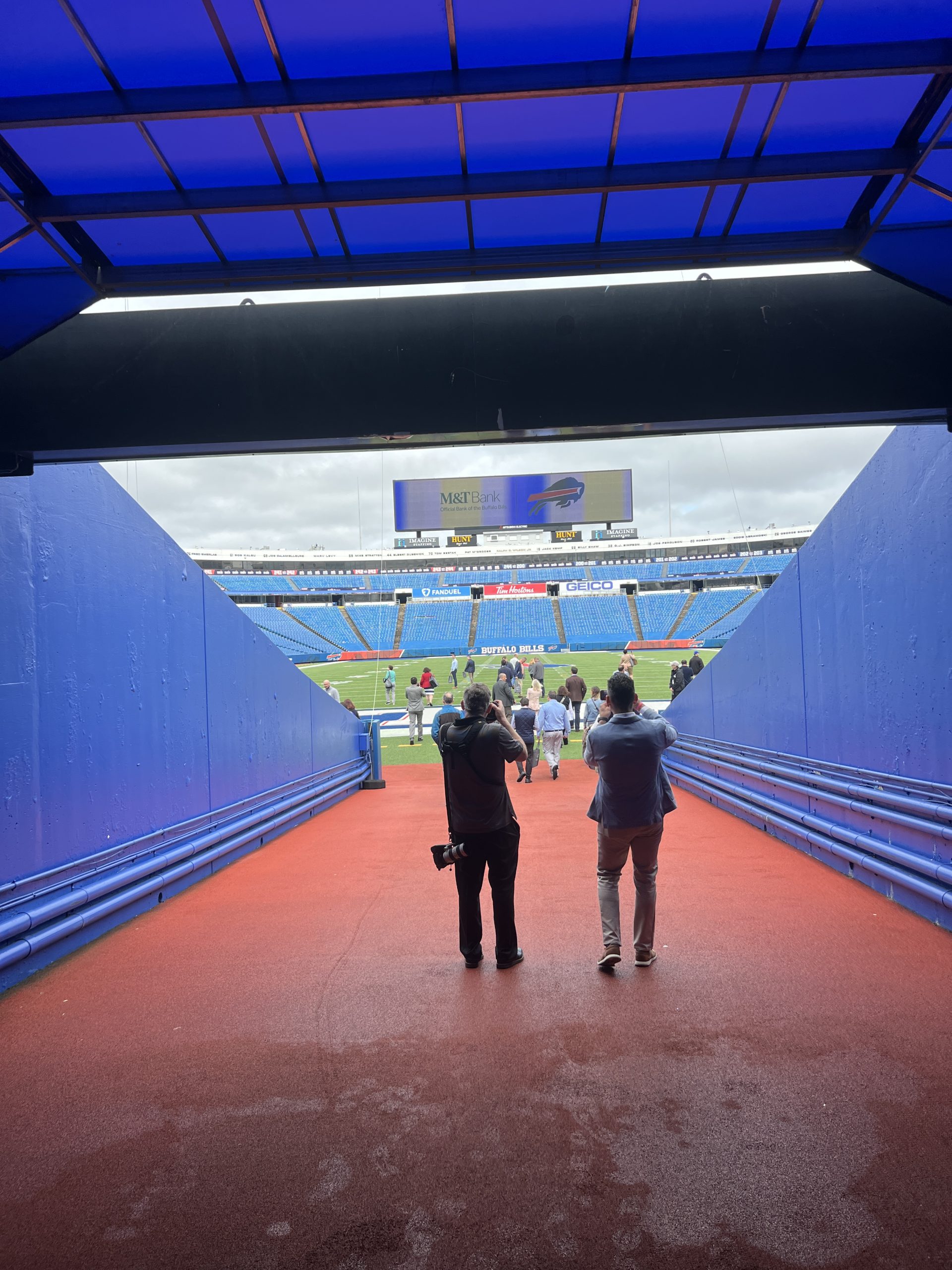
The same tunnel the Bills run out of on game day. Walking through it never gets old—this place is full of memories.

The Superman-themed image I gave Beane—one for him, one for Coach McDermott, and one for #17 himself. Because sometimes, Josh really does fly.

 The Logistics Plus (LP) France team continues to support and manage projects across Europe, Asia, and Africa. Here are a few of the most recent projects handled by the LP France team:
The Logistics Plus (LP) France team continues to support and manage projects across Europe, Asia, and Africa. Here are a few of the most recent projects handled by the LP France team:


 Logistics Plus Customs Brokerage Manager
Logistics Plus Customs Brokerage Manager 






